Are melissa and mint the same plant or not?
Mint and Melissa Are completely different plants. They differ not only in appearance, but also in the aroma released, as well as in useful qualities. Do not replace lemon balm with mint and vice versa. Before use, you should familiarize yourself with the differences, similarities, as well as the beneficial properties and contraindications of both herbs. And only then can they be used for medicinal purposes.
Content:
- How to distinguish mint from lemon balm in appearance?
- Composition and useful properties of lemon balm
- Harm and contraindications
- Mint - composition and medicinal properties
- Who is mint contraindicated for?
- Melissa and mint - what's the difference?
- How and where are herbs used?
- How to properly collect, prepare and store plants
How to distinguish mint from lemon balm in appearance?
It is difficult for an inexperienced gardener, and even more so for an ordinary buyer, to distinguish mint from lemon balm... When buying, you should focus on a number of indicators inherent in a particular plant:
- First of all, the differences lie in the structure of the shrubs. Mint grows as an upright plant with a distinct stem. In contrast, lemon balm has several stems, standing out for the neat structure of a small bush. Mint does not exceed 50 cm in height, while lemon balm reaches 80 cm and more.
- Lemon balm leaves are round, light green in color, large in shape and velvety to the touch. Peppermint is distinguished by pointed, oblong-shaped leaf plates with a smooth leaf surface. In addition, the color of mint differs significantly from the shade of lemon balm - its leaves are saturated green with a dark tint.
- Mint flowers are small in size, collected in a spikelet at the top of the shoot, give off a purple tone. Melissa differs in inflorescences slightly exceeding mint flowers, but their shade, unlike the latter, is pale blue. Its buds are collected in false rings, connecting in inflorescences of 5-8 pcs.
- Peppermint rarely produces fruit. Unlike mint, lemon balm bears fruit annually. The fruits can be seen in detail. They represent a rounded box, more like an egg shape. It contains 4 nuts, which are the seedlings of lemon balm.
- The main distinguishing feature of mint from lemon balm is the aroma emitted by plants. In mint, this smell is more pungent, menthol. While lemon balm gives off a lighter sweetness, vaguely reminiscent of a lemon aftertaste.
Therefore, if you know the small nuances of the appearance of each of the plants. Shrubs can be distinguished unmistakably.
Composition and useful properties of lemon balm
Melissa grows in almost any garden plot. Its composition is endowed with many useful trace elements and vitamins, thanks to which it has the ability to have a beneficial effect on the human body. Lemon balm contains the following components:
- Essential oils.
- Flavonoids.
- Tannins.
- Resins.
- Organic acids.
- Acid - rosemary and coffee.
- Bitterness.
- Vitamins - C, D, B (1, 2, 6, 9).
- Biologically active elements.
- Zinc, calcium, selenium, copper, chromium, vanadium, iron, molybdenum, nickel, manganese, potassium.
Thanks to its active ingredients, lemon balm can have a beneficial effect on the human body. Essential oils have a relaxing, soothing, antispasmodic effect. Flavonoids, like tannins, act on the body as an anti-inflammatory agent and as an antibacterial effect.
Tannins have a positive effect on the regeneration of the skin. Bitterness, as well as organic acids, contribute to the establishment of metabolism. In addition, bitterness normalizes the work of the glands responsible for the digestive process.
Melissa is recommended for the treatment of the following conditions:
- Ailments of the nervous system - has a calming effect, eliminates insomnia, helps relieve pain in the head.
- Diseases of the digestive organs - increases appetite, eliminates pain in the stomach, improves metabolic process. Helps as an adjunct treatment for ulcers, intestinal spasms, increased flatulence and gastritis.
- Cardiovascular disease - promotes vasodilation, stimulates blood pressure lowering and blocks the accumulation of cholesterol in the blood.
- The inflammatory process of the female genital organs - reduces pain during menstruation, is effective for eliminating toxicosis, with neuroses during menopause, reduces inflammation of the appendages.
Thus, lemon balm contains a large amount of vitamins and minerals that affect various diseases. Long-term therapy with the use of this drug can reveal positive trends in the treatment of ailments.
Harm and contraindications
Whatever positive recommendations and reviews a lemon plant has, it has a list of contraindications. In the case of improper intake, harm is revealed instead of benefit. Do not overuse tea infused with dried leaves.
It is not recommended to overestimate the maximum allowable dosage. The result of such phenomena can be drowsiness, inhibition in the perception of information and a strong decrease in blood pressure. Therefore, you should not introduce into the body infusions of medicinal herb before important events that require concentration of attention.
It should be noted that lemon balm in large quantities affects men not in the best way - potency decreases sharply.
With unhealed wounds on the body, you should not use water procedures with the addition of lemon grass infusion. Also, do not use this remedy for a pustular rash. Unforeseen consequences may arise.
There are contraindications for taking the drug for the following categories of people:
- In the acute form of the course of stomach ulcers.
- People with epilepsy.
- Children under 3 years of age.
- With liver failure of a severe nature.
- Patients with persistent hypotension.
- With individual intolerance.
If contraindications are identified, the agent should not be used even in minimal doses. Its introduction into the body can end in disastrous results.
Mint - composition and medicinal properties
As part of mint components similar to lemon balm are visible. This way a sufficient amount of flavonoids, tannins, bitterness and essential oil are released. In addition, essential oils contain up to 60% menthol. Due to this, when rubbing the gruel from the leaves of the plant into the skin, a cooling effect is felt. Mint is saturated with various trace elements - manganese, potassium, zinc, magnesium, iron, calcium, phosphorus. Contains the following vitamins - C, A, B (1,2,5,6,9).
When using mint for the body, the following beneficial properties are distinguished:
- Has antiemetic properties - for this you should mix a few drops of pomegranate and mint juice.The compound relieves attacks of severe nausea, stops vomiting. Recommended for use during pregnancy.
- It is possible to use it as an anti-inflammatory agent, as well as relieves pain.
- It acts on the nervous system as a sedative, eliminates an unreasonable feeling of anxiety.
- Used as a choleretic agent.
- It is used as a diuretic, in which excess fluid is naturally eliminated from the body.
- Strengthens damaged hair, promotes its treatment.
- With itchy skin, it is recommended to put lotions - they eliminate inflammation and dryness of the epidermis.
- Helps with increased flatulence, as a stimulant to remove stagnant gases.
Thus, the use of mint for the treatment of various diseases has a beneficial effect on the processes occurring in the body.
Who is mint contraindicated for?
Just like the lemon plant, mint negatively affects the male population. It has a strong calming effect, which has a positive effect on nervous, unbalanced and emotional people.
Do not use the drug for therapy during pregnancy. The plant contains a large dose of estrogen, the effect of which on the female body in an interesting position stimulates miscarriage or provokes premature delivery.
There are the following contraindications, in which you should not affect the body with mint:
- Children under 3 years of age.
- People with low blood pressure.
- During breastfeeding - reduces lactation.
- When diagnosing infertility, frequent use only exacerbates the process.
- In the presence of individual intolerance.
The use of mint in such cases can stimulate the development of side effects or other unpleasant conditions:
- Respiratory impairment.
- The appearance of skin rashes and severe itching.
- Stimulates the urge to vomit.
- There are severe pains in the head.
- Redness appears on the upper layers of the epidermis.
- Causes bronchospasm, provoking a continuous suffocating cough.
Thus, you should not use mint-based infusions and teas in some situations, as well as monitor the dosage of the agent introduced into the body.
Melissa and mint - what's the difference?
These two plants have many differences, but also many similarities. Both shrubs are used to treat various diseases. At the same time, they have more recommendations for indications than for contraindications. Therefore, the bulk of people can use products made on the basis of medicinal herbs .:
- Most of the ingredients are found in one plant and in another. The greatest concentration of useful elements is noted in the foliage of shrubs. A significant difference between the components of herbs is the increased content of essential oils in mint.
- Melissa is slightly behind in the content of this component. Because of this, some people, for example, women who are carrying a child, are prohibited from using mint infusions, decoctions and teas.
- Melissa, in contrast to mint, is effective in eliminating inflammatory processes in the internal organs of a person. Mint should not be used for open wounds on the skin, but lemon balm, on the contrary, stimulates the upper layers of the epidermis to regenerate faster.
- Peppermint stands out for the fact that it is more often used to treat various diseases, primarily for the treatment of diseases of the central nervous system. Melissa is recommended to eliminate puffiness and bruising (bruises), as well as to neutralize acne, acne on the face and manifestations of herpes on various skin integuments.
- What the shrubs have in common is a negative effect on male potency. In contrast to this, lemon balm is prescribed mainly for the female sex, for the treatment of nervous excitement, as well as diseases associated with the genitals.
Thus, at first glance, the same plants reveal a large number of differences that significantly affect the beneficial properties directed to the human body for treatment.
How and where are herbs used?
Medicinal herbs are used not only for infusion in tea, but also for the treatment of various diseases in medicine, as an auxiliary substance. Plants are also used in:
- In medicine, each of the plants has slight differences in application, in most cases they are recommended for the treatment of almost the same diseases. Only the dosages required for drug administration differ. But lemon balm is a more potent sedative than mint. Therefore, not all patients can recommend it for use.
- As a cosmetic product, lemon balm is much more versatile. It can be used at home to make masks and moisturizers. It is used for various types of skin - dry and oily. In addition, lemon balm products help to cope with the problems of dandruff on the head.
- Mint, in turn, is recommended only for oily skin care. Funds based on it help to narrow pores, eliminate the shine of oily skin, and dry out areas of high fat content. If you dilute the hair shampoo with a decoction of mint, then the blood circulation of the scalp will increase, while the hairline will become thicker and increase in growth.
- Both aromatic plants are present in culinary recipes fresh. The leaves of these shrubs are added to vegetable soups and fresh salads. They can be used as a seasoning, dried. The aromatic smell and original taste add spices from such ingredients to vegetables pickled for the winter.
- Separately, mint is used as a strong flavoring agent. It is often used as a decoration and flavoring additive for sweet desserts. While lemon balm is practically not used for making sweets. In most cases, it is recommended to be used as a similar substitute for peppercorns. It is used more as a condiment.
Thus, medicinal herbs have found their application in various industries. Many dishes or skin care products are simply unthinkable without the main ingredient.
How to properly collect, prepare and store plants?
The optimal period for collecting leaves is from the beginning of June to the end of August. A conventional sign for the beginning of collecting blanks for storage is the beginning of the formation of buds and active flowering of plants.
The collection of leaves should begin in the early morning, immediately after the first rays of the sun have dried the fallen dew. If the leaf plates are powdered with dust, it is recommended to spray them with plain water from a spray bottle in advance. Then wait until the water is dry. The main thing is not to miss the moment to collect. Summer scorching rays can outstrip, burn the entire intended harvest.
You only need to pluck the leaves from the shrub on a sunny day.
It is not recommended to cut the leaves when wet, and it is also not recommended to wash them - they tend to rot, rot during the drying process. Therefore, after collection, they are not processed. It is forbidden to completely peel the leaves from the trunk. It is necessary to leave several plates together with flowers for further reproduction of an unpretentious medicinal plant.
It is not worth freezing, both plants cannot completely tolerate a decrease in temperature. Therefore, it is recommended to dry the leaves. The leaves are dried in the shade, but in the open air where oxygen is constantly circulating. Some people dry the leaves in the oven. But the temperature for exposure should not exceed 35 C.
More information on how to grow mint and lemon balm on the windowsill can be found in the video:
Completely dried leaves should be stored in a glass container with a good-quality lid.If you put herbs in a canvas bag or bag, there should be no damp substances nearby that can saturate the ingredients. Duration of storage of medicinal raw materials - 2 years. After the expiration date, it is not recommended to use the components for the preparation of any products.
In this way, mint and Melissa have a lot in common but are also very different. Both herbs have a lot in common when used for therapy and in cosmetology. But when applying the remedy, you must always remember about the possible consequences and harm due to exceeding the dosage.



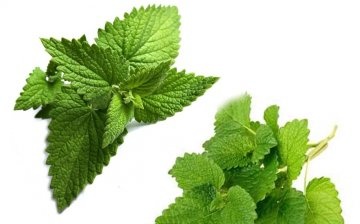
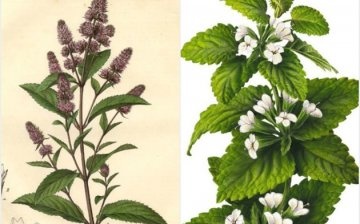
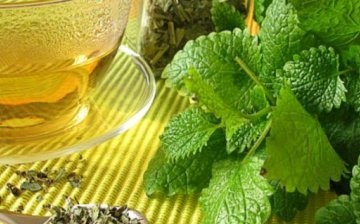

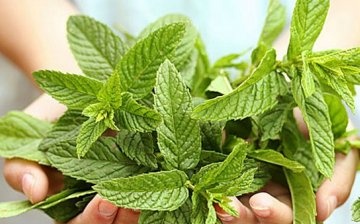
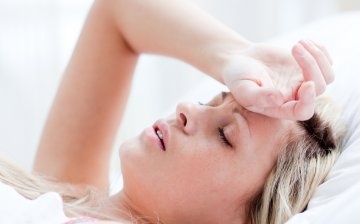
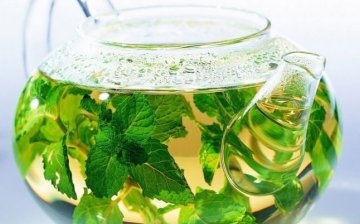
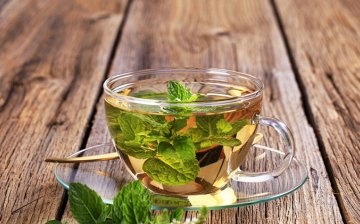
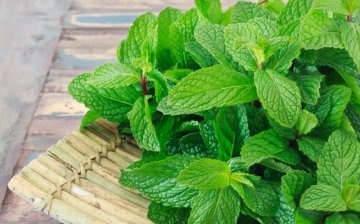









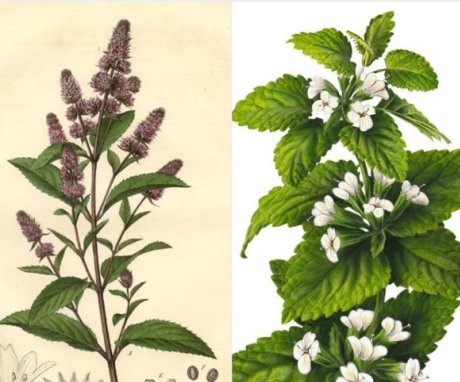
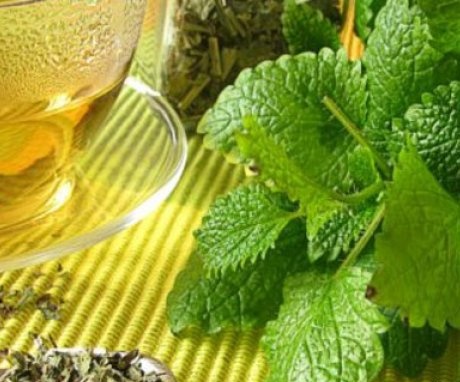

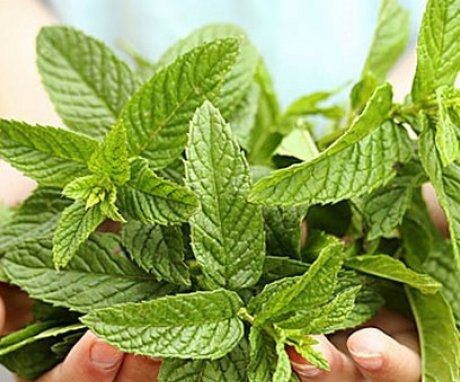


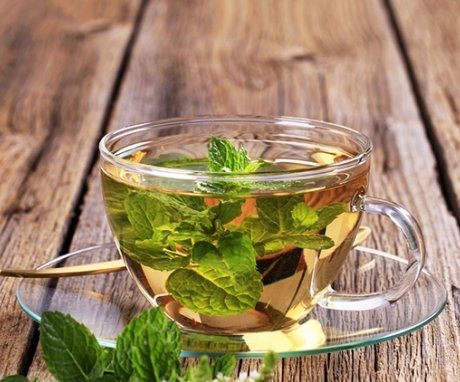

As a remedy, I would not use lemon balm or mint, because they have too many contraindications. But in cosmetics, or seasoning for food (I like tea with mint) - it will be just right.